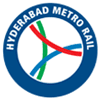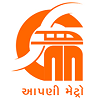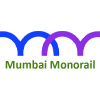Active Metro Rail Networks



















Under Construction Metro Rail Networks





Proposed Metro Rails Networks






Indian Metro system
The metro system in India is a rapidly growing mode of urban transportation that provides efficient and convenient travel options in major cities. The metro networks are designed to alleviate traffic congestion, reduce pollution, and enhance connectivity.
Urban rail transit encompasses various systems, including Rapid transit, Suburban rail, Monorail, and Trams. As of 2021, metro systems in fifteen major Indian cities collectively transported a staggering 2.63 billion passengers annually, solidifying the country as one of the busiest urban rapid transit hubs in the world in terms of ridership. With a combined length of 859 kilometers (534 miles), India's metro systems rank as the fourth longest operational networks globally.
History of Indian Metro system
The inception of India's urban rail transit system can be traced back to the establishment of the first-ever commuter rail, also known as suburban rail, in Mumbai on 16 April 1853. This significant milestone marked the commencement of passenger train services in the country. The inaugural journey commenced from Bori Bunder, now known as Chhatrapati Shivaji Terminus in Mumbai, and reached Thane, covering a distance of 34 kilometers in just one hour and fifteen minutes. This pioneering achievement earned the distinction of being Asia's first suburban railway.
During the early 20th century, Tram systems emerged as a vital mode of transportation in India's four major cities: Delhi, Kolkata, Chennai, and Mumbai. These Tram networks played a crucial role in fulfilling the intracity travel requirements of the local population. The advent of Trams began with the introduction of horse-drawn trams in Kolkata in 1873. Subsequently, Electric Trams made their debut in Chennai in 1895, followed by the cities of Mumbai, Kanpur, and Delhi.
However, between the years 1933 and 1964, Tram services were gradually discontinued in all Indian cities except Kolkata, where they continue to operate on the streets to this day, serving as a cherished heritage. At present, there are six Kolkata tram routes that are active. This is one of the initial routes laid in 1883 and is still operational.
Operational Metro system in India 2023
Currently, India boasts 16 functioning rapid transit systems in 15 cities across India. The Delhi Metro stands as the most extensive network among them. As of March 2023, India's operational metro lines cover a substantial distance of 859 kilometres (534 miles), contributing to the country's fourth-longest metro network globally. Only China, the USA, and South Korea possess longer metro networks. Additionally, an additional 568.15 kilometres of metro lines are presently under construction in India.
FAQs About Indian Metro Rails:
𝒜. The Kolkata Metro, launched in 1984, is India's first metro rail system and remains a vital part of the city’s transportation network.
𝒜. As of now, there are over 15 cities in India with operational metro networks, including Delhi, Mumbai, Bangalore, Hyderabad, Chennai, and Kolkata.
𝒜. The Delhi Metro has the highest daily ridership in India, serving millions of passengers daily.
𝒜. Metro trains in India typically run at an average speed of 30-40 km/h, with a maximum speed of around 80-90 km/h.
𝒜. Yes, many metro stations, especially in Delhi and Mumbai, offer free Wi-Fi services to passengers.
𝒜. Metro stations in India are equipped with advanced security systems, including CCTV surveillance, metal detectors, baggage scanners, and emergency response systems.
𝒜. Most metro services in India operate from around 5:30 AM to 11:00 PM. However, timings may vary across cities.
𝒜. The Kolkata has oldest metro rail service in India.
𝒜. Delhi Metro is the second oldest metro after Kolkata Metro. It was completed in the year 2002 and is spread over 231 kilometres. It is the largest operational metro in India and has 173 stations.
𝒜. Fare or ticket price of metro travel depends on the distnace between stations, during various time frames.
